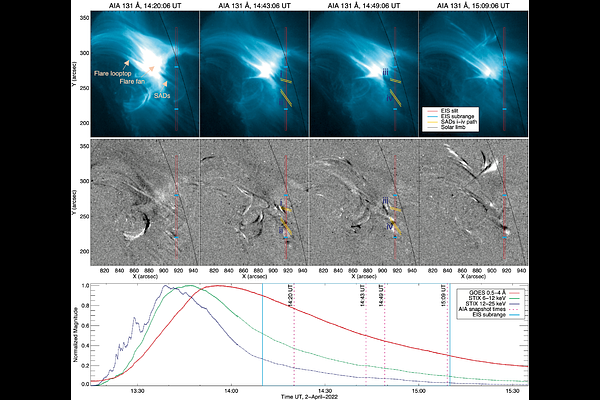Spectroscopic Observations of Supra-Arcade Downflows

Spectroscopic Observations of Supra-Arcade Downflows
Ryan J. French, Maria D. Kazachenko, Teodora Mihailescu, Katharine K. Reeves
AbstractDespite their somewhat-frequent appearance in EUV imaging of off-limb flares, the origins of Supra-Arcade Downflows (SADs) remain a mystery. Appearing as dark, tendril-like downflows above growing flare loop arcades, SADs themselves are yet to be tied into the standard model of solar flares. The uncertainty of their origin is, in part, due to a lack of spectral observations, with the last published SAD spectral observations dating back to the Solar and Heliospheric Observatory / Solar Ultraviolet Measurements of Emitted Radiation (SOHO/SUMER) era in 2003. In this work, we present new observations of SADs within an M-class solar flare on April 2nd, 2022, observed by the Hinode EUV Imaging Spectrometer (EIS) and NASA Solar Dynamics Observatory. We measure Fe XXIV 192.02 Angstrom Doppler downflows and non-thermal velocities in the low-intensity SAD features, exceeding values measured in the surrounding flare fan. The ratio of temperature-sensitive Fe XXIV 255.11 Angstrom and Fe XXIII 263.41 Angstrom lines also allow the measurement of electron temperature, revealing temperatures within the range of the surrounding flare fan. We compare EIS line-of-sight Doppler velocities with plane-of-sky velocities measured by AIA, to construct the 3D velocity profile of four prominent SADs, finding evidence for their divergence above the flare loop arcade - possibly related to the presence of a high altitude termination shock. Finally, we detect 'stealth' SADs, which produce SAD-like Doppler signals, yet with no change in intensity.